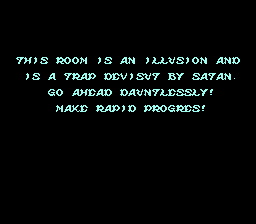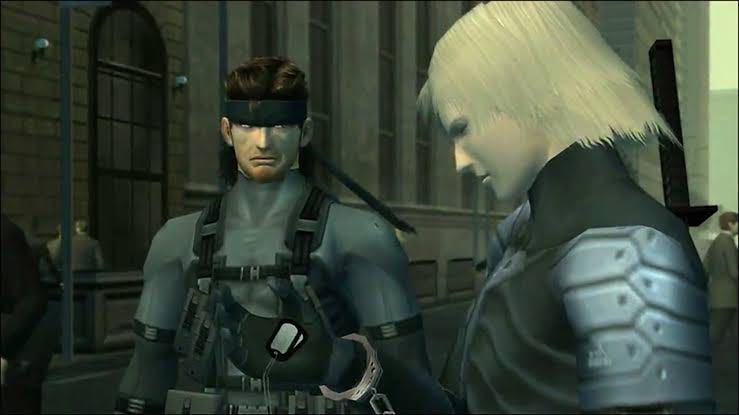STATE OF GAMING: WHEN DEVELOPERS TROLL PLAYERS IT CAN BE A LOT OF FUN!
Trolling a player can be s great way for a game developer to have a bit of fun, or make a bit of extra money. It's a great way to make gaming history too…
Read Time: 7 Minutes
Video game developers have long been known to troll their players. Whereas traditional trolling typically involves harassing, criticising, and similar such things; trolling on behalf of developers usually takes on a lighter and more comedic tone. Although it can still be quite annoying.
One of the most well-known examples of developer trolling occurred in a classic old 'Nintendo' game called 'Ghosts 'n Goblins', which I've written about before. The game, notorious for its difficulty, actually has a fake ending the first time you manage to get to the end of it. The player is informed that the final room in which the endgame boss was defeated in was just an illusion, and the game then sends the player back to the first level, requiring them to beat the whole game all over again in order to see the actual ending.
The notorious text that appeared during the “fake ending.” What a tease. (Source: ‘VG Museum’)
It was utterly punishing. The game had no save feature, meaning players had to hone their skills to such an extent, that they could battle through the game's increasingly chaotic levels not once, but twice. All in a single play-through. It must have worked a treat for the developers—especially for the port of the game that was a mainstay in many arcades, as annoyed players continued to feed coins into the machine to get the actual ending. And arguably, even that wasn’t worth it. It was all about the sense of achievement and the bragging rights.
Another example involved what must be one of the most ballsy and irritating switcheroos of all time, which occurred in 'Metal Gear Solid 2'. The original game was a breakout success, putting the franchise on the map, and cementing the man behind it as a visionary. But it's sequel, though excellent, promoted itself entirely around the idea of the original hero, Solid Snake, returning—and then wrote him out of the game within the first hour of play.
Players were astonished. All the gameplay footage shown in the lead-up to its release featured Snake, Snake was featured on the cover art for the game, and yet players had to play as Raiden for the overwhelming bulk of the experience. A brand new character nobody knew or cared about. And compared to the battle-hardened and grizzled Snake that everyone loved and considered a total badarse, Raiden was a sulking wuss.
Solid Snake to Raiden was not the handing over of the torch that fans wanted. (Source: ‘Den Of Geek’)
It was a pretty controversial move at the time. In fact, I can vividly remember being a high school student back then, and lots of people flat-out not believing that Snake gets declared MIA after the first sequence and you don't play as him anymore. It seemed unbelievable.
Quite a few savvy developers have adopted unique forms of trolling to take a shot at gamers who pirate their video games. 'Crysis Warhead' was known to require a behemoth of a gaming rig to run, but if you had a pirated copy, players would find that their bullets and grenades would turn into harmless chickens that made progress impossible.
There are lots of examples of this, but my favourite has to be in 'Game Dev Tycoon' where players try to develop and sell video games in a managerial simulation. Players who pirated the game would eventually find that their efforts to develop and profit from video games became impossible due to crazy levels of piracy rendering them unprofitable. Talk about poetic justice!
But what’s hands down the best example of developer trolling has to be the still somewhat mysterious case of well-known 'YouTube' gamer Markiplier streaming 'Welcome to the Game 2'. In fact, the whole situation is so meta, that it's hard to actually nail down just how much he was being trolled. I'll explain.
'Welcome to the Game 2' sees players take on the role of a humble hacker living in an apartment. You're a reporter, trying to track down a girl who's mysteriously disappeared, and the clock is ticking. A livestream of her is released, and it's revealed that she's going to be killed within a matter of hours, pitting players in a race against the clock to use the dark web to try and track down where she is.
Players will have to head outside for various reasons from time to time, as well as ply their hacking skills on the dark web to solve the case. But the gameplay itself is iterative in nature. So, what you'll find as you play this game, is that you'll fail often and have to restart. You'll forget to secure your computer as you leave the apartment, only to find a SWAT team waiting to arrest you when you return; or you'll fail to hide adequately when the masked kidnappers begin stalking you and be killed. But every single time that happens, you as the player learn one more example of what not to do, and eventually you get good enough to do everything right within the time limit to beat the game.
At least, that's the way it's supposed to work. But Markiplier, while streaming the game to a large audience, found that the game was actually misbehaving for him from time to time. There would be times where he seemed to trigger a game over despite not really doing anything wrong, and it all seemed to start happening after he threw some shade at the developer of the game.
When other streamers played the game live around the same time, there were occasional instances of random music beginning to play in the game, and that sort of thing. But Markiplier seemed to trigger the assassination events that would end his run, and appeared to just get stuck in a loop where nothing he could do allowed him to progress. So, he rage-quit, live, and had nothing to do within the game again.
This is where the story takes an interesting turn though, because Adam Flatau, the main man behind the game, was apparently triggering it all on purpose. He'd done it before, to others with smaller followings, but Markiplier was the white whale that could promote the game into the stratosphere. Flatau supposedly admitted on social media that he uploaded a patch that allowed him to do it, but it’s long gone now.
What makes this all-the-more unusual, is that Flatau actually gave his voice and likeness to the actual antagonist in the game. A puppet-master pulling the strings, who gives the player a choice of either walking away, or taking the girl's place, at the conclusion of 'Welcome to the Game 2'. Not only was Flatau the villain in the game, but he became the villain in real life, similarly trying to thwart the progress of the protagonist.
The incident has become the stuff of legends in the gaming world, but the game itself is still quite niche, and the overarching franchise never really took off. But as far as I'm concerned, it'll be hard to top what it did to the world of video game developer trolling...



